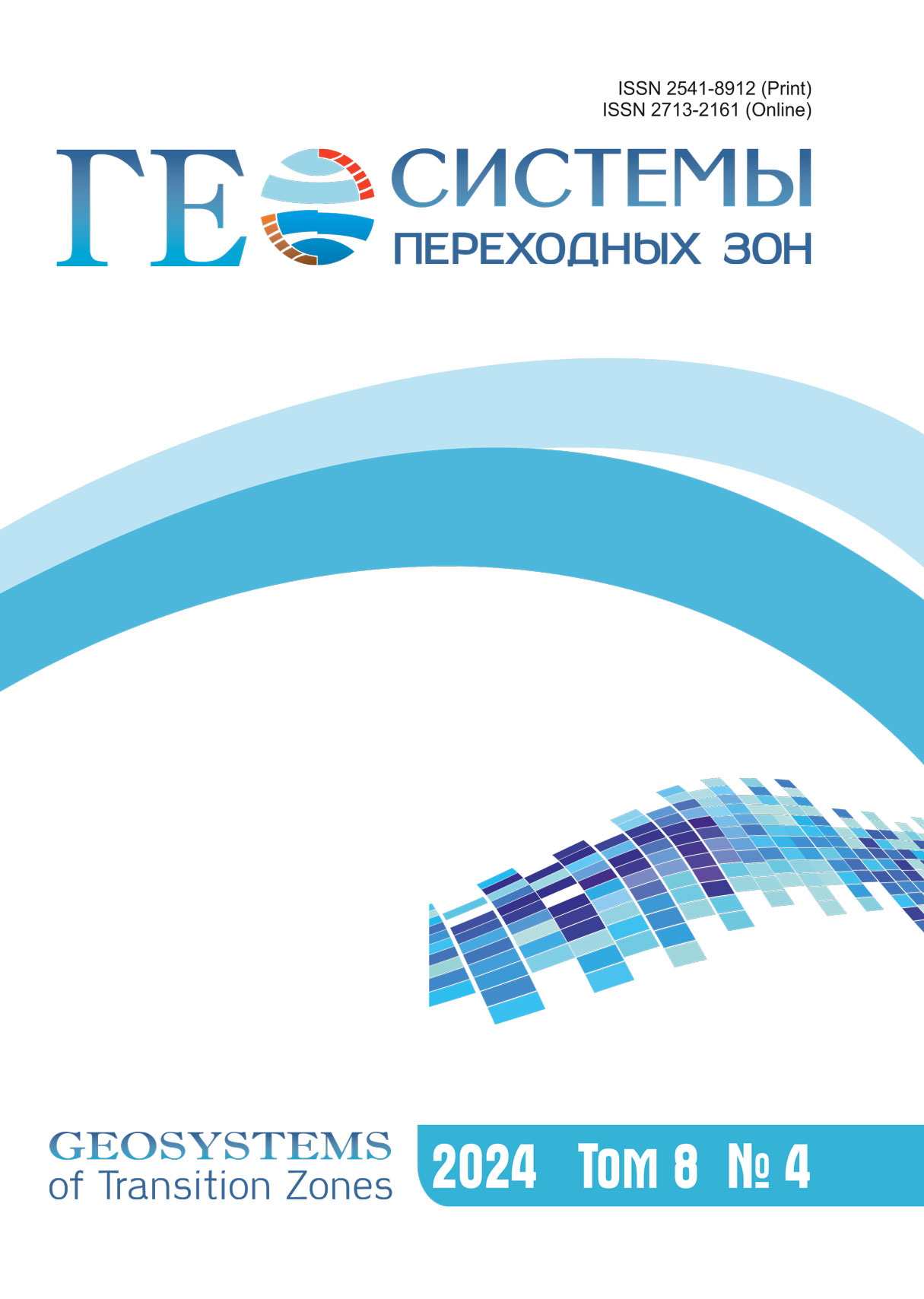
| Abstract PDF ENG. .PDF RUS | Full text PDF RUS |
Abstract. Global warming causes further degradation of glaciers and the release of water into the World Ocean. The influx of additional water leads to a rise in sea level. The rate of modern water level rise is still influenced by the residual processes from the last global glaciation, with its maximum about 20 thousand years ago. The melting of large ice sheets in areas far from the centers of glaciation, such as the Far Eastern seas, caused the loading of the seabed with a 120 m layer of water – hydroisostasy – which caused vertical displacements of the seafloor and coastal areas. Although the influx of the glacier meltwater ceased 4–6 thousand years ago, due to the viscous properties of mantle layers, vertical displacements of the solid surface continue to this day, which contributes to the modern rise in water level in the seas of the World Ocean. The contribution of residual processes should be taken into account when assessing modern fluctuations in sea level and vertical displacements of the solid surface of the Earth. This study provides the estimated contribution of residual displacements associated with the consequences of the last global glaciation to the modern rise in sea level and vertical displacements of the solid surface of the Earth in the Far Eastern seas, which was obtained by numerical modeling. As a result of the conducted modeling, it was shown that the climatic rise in sea level is restrained by the negative contribution of hydroisostasy in geodynamically active zones.
Keywords:
hydroisostasy, relative changes in sea level, displacements of the solid surface of the Earth, rise in sea level
Для цитирования: Булгаков Р.Ф. Вклад гидроизостазии в современные изменения уровня морей и вертикальные движения твердой поверхности Земли для морей Дальнего Востока. Геосистемы переходных зон, 2024, т. 8, № 4, с. 357–366.
https://doi.org/10.30730/gtrz.2024.8.4.357-366, https://www.elibrary.ru/ayiipa
For citation: The contribution of hydroisostasy to modern changes in sea level and vertical displacements of the solid surface of the Earth in the Far Eastern seas. Geosistemy perehodnykh zon = Geosystems of Transition Zones, 2024, vol. 8, No. 4, pp. 357–366. (In Russ., abstr. in Engl.).
https://doi.org/10.30730/gtrz.2024.8.4.357-366, https://www.elibrary.ru/ayiipa
References
1. Peltier W.R. 2002. Comments on the paper of Yokoyama et al. (2000), entitled "Timing of the Last Glacial Maximum from Observed Sea Level Minima". Quaternary Science Reviews, 21(1–3): 409–414. https://doi.org/10.1016/S0277-3791(01)00112-3
2. Tamisiea M.E. 2011. Ongoing glacial isostatic contributions to observations of sea level change. Geophysical Journal International, 186: 1036–1044. https://doi.org/10.1111/j.1365-246x.2011.05116.x
3. Gregory J.M., Grif?es S.M., Hughes C.W., Lowe J.A., Church J.A., Fukimori I., Gomez N., Kopp R.E., Landerer F., Le Cozannet G., Ponte R.M., et al. 2019. Concepts and terminology for sea level: mean, variability and change, Both local and global. Surveys in Geophysics, 40: 1251–1289. https://doi.org/10.1007/s10712-019-09525-z.10
4. Milne G.A., Mitrovica J.X. 1998. Postglacial sea-level change on a rotating Earth. Geophysical Journal International, 133: 1–19. https://doi.org/10.1046/j.1365-246x.1998.1331455.x
5. Peltier W.R. 1974. The impulse response of a Maxwell Earth. Reviews of Geophysics and Space Physics, 12(4): 649–669. https://doi.org/10.1029/RG012i004p00649
6. Caron L., Ivins E.R., Larour E., Adhikari S., Nilsson J., Blewitt G. 2018. GIA model statistics for GRACE hydrology, cryosphere, and ocean science. Geophysical Research Letters, 45. https://doi.org/10.1002/2017GL076644
7. Spada G., Stocchi P. 2006 . The sea level equation: theory and numerical examples. Roma: Aracne, 96 p.
8. Spada G., Stocchi P. 2007. SELEN: A Fortran 90 program for solving the "sea-level equation". Computers & Geosciences, 33(4): 538–562. https://doi.org/10.1016/j.cageo.2006.08.006
9. Spada G., Melini D., Galassi G., Colleoni F. 2012. Modeling sea level changes and geodetic variations by glacial isostasy: The improved SELEN code. arXiv.1212.5061 [physics.geo-ph]. https://doi.org/10.48550/arXiv.1212.5061
10. Bulgakov R.F., Afanas’ev V.V., Ignatov E.I. Effect of hydroisostasy on postglacial transgression on the shelf and coast of Primorye as revealed by computer modelling. Geosistemy perehodnykh zon = Geosystems of Transition Zones, 4(2): 220–229. [Булгаков Р.Ф., Афанасьев В.В., Игнатов Е.И. 2020. Гидроизостазия как фактор, повлиявший на ход послеледниковой трансгрессии на шельфе и побережье Приморья, по результатам численного моделирования. Геосистемы переходных зон, 4(2): 210–219]. https://doi.org/10.30730/gtrz.2020.4.2.210-219.220-229
11. Bulgakov R.F. 2022. Process of postglacial transgression on the coasts of the East Siberian and Laptev seas. Oceanology, 62: 98–104. https://doi.org/10.1134/s0001437022010039 [Булгаков Р.Ф. 2022. Ход послеледниковой трансгрессии на побережье морей Восточно-Сибирского и Лаптевых. Океанология, 62(1):117–124].
12. Spada G., Melini D. 2019 . SELEN 4 (SELEN version 4.0): a Fortran program for solving the gravitationally and topographically self-consistent sea-level equation in glacial isostatic adjustment modeling. Geoscientific Model Development, 12(12): 5055–5075. https://doi.org/10.5194/gmd-12-5055-2019
13. Argus D.F., Peltier W.R., Drummond R., Moore W.A. 2014. The Antarctica component of postglacial rebound model ICE-6G_C (VM5a) based on GPS positioning, exposure age dating of ice thicknesses, and relative sea level histories. Geophysical Journal International, 198(1): 537–563. https://doi.org/10.1093/gji/ggu140